Pavement Management System implementation at Rome Fiumicino International Airport
- Like
- Digg
- Del
- Tumblr
- VKontakte
- Buffer
- Love This
- Odnoklassniki
- Meneame
- Blogger
- Amazon
- Yahoo Mail
- Gmail
- AOL
- Newsvine
- HackerNews
- Evernote
- MySpace
- Mail.ru
- Viadeo
- Line
- Comments
- Yummly
- SMS
- Viber
- Telegram
- Subscribe
- Skype
- Facebook Messenger
- Kakao
- LiveJournal
- Yammer
- Edgar
- Fintel
- Mix
- Instapaper
- Copy Link
Posted: 1 October 2010 | Alessandro Marradi, University of Pisa, Civil Engineering Department and Mattia Tamarozzi, University of Pisa,Civil Engineering Department | No comments yet
Fiumicino is the ‘hub’ airport for domestic, international, and intercontinental scheduled and charter flights. Ciampino, conversely, is the airport city dedicated to the low cost traffic, goods traffic of ‘express courier’ and to the General Aviation.
Fiumicino is the ‘hub’ airport for domestic, international, and intercontinental scheduled and charter flights. Ciampino, conversely, is the airport city dedicated to the low cost traffic, goods traffic of ‘express courier’ and to the General Aviation.
The history of Rome airports begins in 1916, when Ciampino airport was inaugurated on Via Appia, serving as a military base for airships until 1947.
Ciampino airport remained the capital city airport until 15 January 1961, when Rome Fiumicino International Airport ‘Leonardo da Vinci’ was inaugurated, with two operative runways.
Between 1970 and 1972, runways 1 and 2 were extended and the construction of a third one began. The surface area of the airport had already increased from the initial 1000 hectares to 1500 and the arrival of the B747s made it necessary to modify the hangars in order to cope with these giants of the air. During this decade a third runway was added (16L/34R).
Today, Fiumicino Intercontinental Airport is the main port of entry to Rome and the main air transport infrastructure in the Italian system that connects over 130 destinations worldwide. Currently, the Leonardo da Vinci is considered by traffic volume, the fourth largest airport in Europe (after London airports, Frankfurt and Paris).
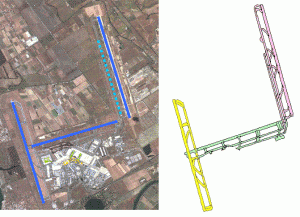

Figure 1 Actual airside layout of FCO International Airport
Fiumicino airport area now extends over 1588 hectares; four runways presently operate at Leonardo da Vinci airport: 16L/34R (3902 x 60 m – code 4F) and 16R/34L (3904 x 60 m – code 4F), separated by a distance of 4,000 metres, 16C/34C (3602 x 45 m – code 4E, close to 16L/34R), mostly used as a taxiway or as a backup of 16L/34R, and 07/25 (3307 x 45 m – code 4E), used only westwards for takeoffs due to dominant winds. The connection between the runways and terminals for passengers and those for goods consists in a system of taxiing routes 22 km in length.
In 2008 the airport reached about 36 million passengers and 345,000 movements. The graph below (Figure 2) shows how traffic has grown in recent years, with annual increases divided by purpose.
Further improvements and major development plans are expected in future years, thereby it is hoped that the Fiumicino Airport can maintain and extend its role as a major hub in the southern European airport system and meet the traffic growth that is expected to arrive in Rome: 55 million passengers by 2020 and 90 million to 100 million by 2044 .
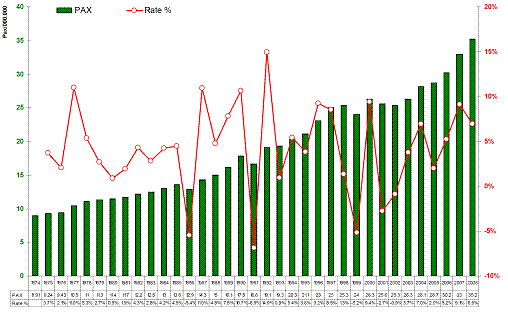

Figure 2 Traffic growth at FCO International Airport
The management of the Italian Capital Airport System, ADR S.p.A.
Aeroporti di Roma S.p.A. was born in 1974 as an exclusive concessionary for the management and development of the Capital Airport System, consisting of Rome Fiumicino ‘Leonardo da Vinci’ intercontinental airport and Rome Ciampino ‘Giovan Battista Pastine’ airport.
An air traffic reference point for central and southern Italy, Rome airport system has efficiently responded over the years to increased traffic, through the development and upgrade of its infrastructures. During the years, the several development and modernisation interventions of the infrastructures of the two Rome airports allowed ADR to face the increase in traffic volumes efficiently and to maintain the quality of service.
The privatisation process of ADR S.p.A. started in July 1997, placing 45% of its share capital on the market through both a private and public offer targeting Italian and foreign institutional investors. The privatisation of ADR was completed in 2000, with divestment of State-owned shares. Actual ADR shareholders are: Gemina S.p.A. (95.8%), Local Organisations (3%), other shareholders (1.2%).
The Italian Civil Authority (ENAC) Regulations for the “construction and management of airports” defines:
◆ the conformity requirements of the airport infrastructures, plants and systems;
◆ the appropriateness of the management organisation, meant as the set of human resources, capabilities and procedures which guarantee that the safety conditions established for airports are maintained.
Enac releases an Airport Certificate which states that the requirements have been met and that the Airport Manual has been drawn up by ADR on the basis of what is foreseen by the Regulations.
Thus, the ADR Group in 2008 started implementing its own Pavement Management System, on the basis of the requirements set forth by ENAC and the most important International Civil Aviation Authority aiming for the certification for Fiumicino and Ciampino airports.
The pavement management procedure was implemented by the aerodrome manual that is a collection of ADR’s internal procedures, to be adopted under ordinary and under emergency situations in the course of airport activities, in order to guarantee the correct management of the airport and ensure safe operations.
This process is included in a broader safety policy since Aeroporti di Roma puts safety of airport operations in first place in the primary aims of its own management activity.
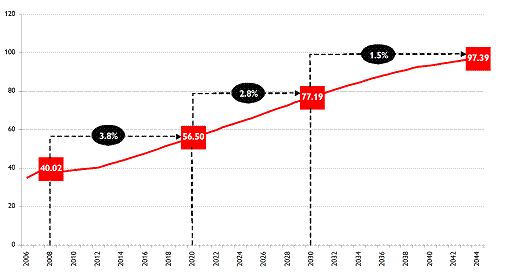

Figure 3 Forecasted traffic growth at FCO International Airport
The Pavement Management System at Rome Airports
A pavement management system must provide a consistent, objective and systematic procedure for setting priorities and schedules, allocating resources, and budgeting for pavement maintenance and rehabilitation. The concepts of an Airport Pavement Management System (APMS) are well outlined in FAA AC150/5380-7A and in TRB Circular E-C127.
An APMS must supply airport authorities with a detailed picture of the present and future structural and functional capabilities of their airside pavements and predicted Maintenance and Rehabilitation (M&R) measures over the total design life of each pavement section, including the required budgets. In order to be really effective, an APMS should not be reactive in the sense that it will respond to visual distresses only, but should be pro-active when it comes to predicting M&R requirements under the local climatic conditions, based on the actual loading by aircraft traffic as well as environmental weathering.
For a structured approach, a pro-active attitude should be strived for. Sometimes when we see the distress appearing at the surface it will be too late to take the economical and most optimum maintenance measure. To have insight knowledge of the performance of a pavement over time, knowledge is needed of the pavement condition directly after construction as well as pavements already operational for a long time.
To cope with the forecasted traffic growth it is also necessary to make optimal use of all available runways, taxiways and aprons. An optimum utilisation of such resources also means that M&R have to be structured into a planned approach, making it a prerequisite to have insight knowledge of the performance of the pavements, asphalt as well as concrete. By carrying out the right M&R at the right time, an airport operator will be able to reduce the overall need for M&R, which in turn will produce economic benefits.
Moreover, only a mechanistic-empirical approach can cope with new aircraft types such as the B777 and A380 using dual-tridem gear layouts, and with the ones that are still to be launched in the coming years such as the B787, A350 and Next Generation B747.
For a rational pro-active approach we need to fully understand the pavement structure behavior, predict the structural as well as functional performance more accurately and take advantage of new technologies. The mechanistic-empirical design approach is now the most widespread used method for design and prediction of performance. The mechanical characteristics used are layer thicknesses and stiffness.
For more than a decade, ADR had systems to monitor and maintain the airside pavement system using nondestructive tests, such as GPR tests to evaluate layer thickness, HWD tests to acquire information about pavement layers stiffness, in addition to visual distress, friction and roughness surveys.
Starting from early 2000, ADR strongly felt the need to organise all the information surveyed on a yearly basis in a structured database in order to be able not only to assess the actual pavement condition, but be the first airport in Italy to evaluate maintenance needs and determine the optimum rehabilitation solutions according to the budget available.
The Heavy Weight Deflectometer delivers the structural input needed for a mechanistic analysis, which enables the maintenance department to check the initial pavement condition and predict the remaining life based on the present and predicted number of movements by aircraft type. Functional performance is based on visual distress, surface friction and roughness. By measuring all these characteristics at certain time intervals, the performance of the pavements can be predicted well in advance and the most economic M&R measures can be implemented based on the critical ‘distress.’
The pressure on the availability of all airfield pavements at any time does mean that the condition of pavements has to be forecasted based on reliable performance indicators and performance models.
Starting from 2004, a deep evaluation of APMS systems available on the market was undertaken by the ADR maintenance division, supported by the ADR engineering branch, ADR Engineering S.p.A.. In 2008, the results of this research allowed the selection of the Dynatest AIRPORTS pavement management systems as the most suitable to be implemented at Rome Airports.
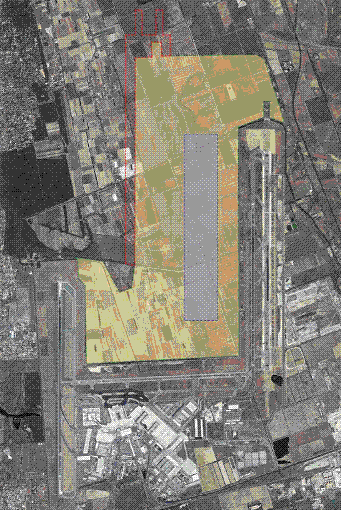

Figure 4 Actual configuration and development area
The Airport Pavement Management System (APMS)
The APMS implemented at Rome International Airport is using visual condition data to predict next year Maintenance and Rehabilitation (M&R). However, in addition to the visual rating, PCI is using structural and functional data as well.
The system utilises technologically advanced mechanistic pavement performance models, based on all available measured data. This is generally considered the best tool available to quantify current pavement condition, anticipate future problems, and select and schedule the best long term rehabilitation strategy at the proper time.
An important feature of this type of APMS is that it makes use of historical data. The simulation of pavement deterioration is started at the first point in time where information is available on the pavement structure (material types, layer thicknesses and moduli). Any available data on structural condition, roughness, skid resistance, visual condition, or required repair that dates after the start of the simulation will be plotted in a graph, together with the deterioration predicted by the performance models. This allows the performance models to be validated (and adjusted, if need be) and also serves as a quality check on the measured performance data.
The implemented APMS may be used as a project level tool for calculating the effects of different rehabilitation strategies on a particular section, and different levels of reliability may be used on individual sections. It may also be used at the network level to automatically determine the most efficient rehabilitation strategies for a large number of pavement sections, from which the optimal combination may then be determined for given budget levels over a number of years (the structural design life). These types of analysis are also known as Life Cycle Costs Analysis (LCCA). The methodology is based on using mechanistic-empirical techniques for modelling performance and effects of rehabilitation. These will be used in detailed effect/cost analysis over the chosen period, and make it possible to evaluate and find the best maintenance plans section by section, which can be used in a network based optimisation with budget constraints.
The system utilises damage predictions by incremental-recursive methods, combined with the mechanistic derived pavement responses in terms of stresses and strains calculated for each layer interface. The method is based on dividing the lifetime into minor time increments, typically a year or a season. At the beginning of each time increment the present condition is used as input for calculating the damage over the time increment, considering the applied traffic loading.
During the first year of implementation, all data related to 2008 and 2009 tests was validated and implemented into the pavement management system for all FCO pavement sections, allowing us to predict future pavement performance under different scenarios (Figure 5) and for different Maintenance and Rehabilitation (M&R) alternatives.
Moreover, the System enables us to interface the database with the mapping programme, including ArcView, allowing graphic representation of information for any and all portions of the APMS data. Results of the optimisation routines allow the budgets to be shown in terms of the airport layout.
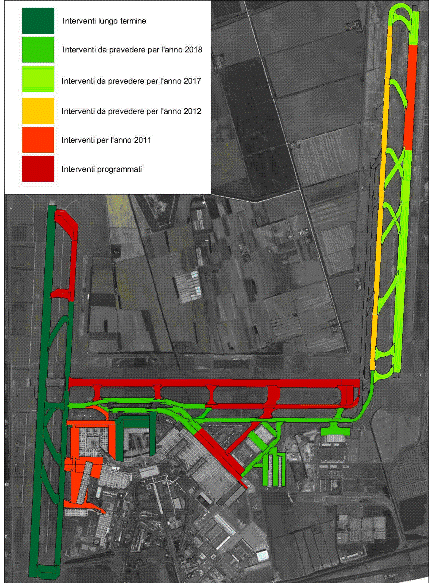

Figure 5 An example of graphical output for M&R solutions
Conclusions
An Airport Pavement Management System was implemented at Fiumicino International Airport. The system enables the Airport Authority to:
◆ Monitor the condition and deterioration using both the visual and structural condition of the pavements and compare this with the requirements
◆ Make use of historical information implemented regarding overall pavement structural strength, roughness, rut depth, skid resistance and visual distresses in order to calibrate the performance and improve accuracy of subsequent analysis
◆ Evaluate the effects of different M&R strategies at various stages in the life of the pavements
◆ Plan future maintenance and rehabilitation measures that can be stored in the database and further considered by the programme
◆ Local environmental effects have been assigned to the various material types
◆ The performance models are recursive, i.e. the system will adjust the performance models to reflect observed conditions, and thus more accurately predict future performance.
About the Authors
Alessandro Marradi
Alessandro Marradi was born in San Gimignano (Siena – Italy) in 1967. A graduate with first-class honors in Civil Engineering at the University of Florence, since 2002 Assistant Professor of “Road Railway Airport Constructions” at the Faculty of Engineering of the University of Pisa and since 1997 he serves as technical director for the Road Research Laboratory of the same University. Since 2006 he is supervisor of several researches funded by public and private companies on the application of nondestructive experimental investigations for airport and road pavement structural and functional performance evaluation. Since 2010 he acts as scientific advisor for the Italian Superior Council of Public Work (Ministry of Public Work).
Mattia Tamarozzi
Mattia Tamarozzi was born in Modena (Italy) in 1978. He completed his studies in civil engineering in 2002/2003, with a thesis about friction and roughness empirical and mechanistic models of airport and road pavement at the Civil Engieering department of Pisa’University. Subsequently, he worked in Perugia with Sintagma s.r.l. engineering company as a project engineer involved in the design of maintenance plans for railways and road; simultaneously, he served as area manager, central and southern Italy, for Digicorp Ingegneria, particulary for civil engieering software development and marketing. Since 2006 he worked as project manager for Aeroporti di Roma s.p.a., Infrastructures Area, managing flight infrastructure maintenance plans.
















